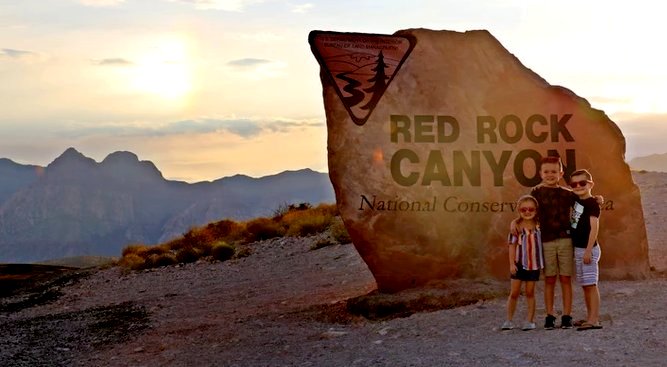
Oh, sure, they are cute and well-behaved for a few moments when mom and dad are taking photos. But what if you locked them in the house with their parents and kept them there for months on end. What do you suppose would happen then?
Well, this:
Meet The Quarantine Kids: Cash (eight years old, on the keyboards), Becket (seven, on drums), Bellamy (five, dancer, backup singer, and penny whistle, when she remembers), and patriarch Colt Clark on guitar. Aubree, the mother and stage director, is behind the camera.
Since the Covid shutdowns started, the Clark family have produced an astounding number of videos, over 200 the last time I counted. At first they were producing a video a day, though this began to slow down as outdoor venues began to re-open up and father Colt, a professional musician, could get back to work from time to time.
The family got started making these videos for a lot of reasons – as a way to keep the kids occupied, to give Clark an excuse to practice (even professional musicians spend a lot of time practicing), and to stay in touch with grandparents and other family.
They originally posted the videos to social media so Audrey’s family could see them. That’s why Bellamy waves goodbye at the end of the video – she’s saying goodbye to her grandparents, aunts, uncles, and cousins.
I don’t know if you’d say the videos went viral, but they got a lot of views on social media, so Audrey started a YouTube channel too. Between YouTube and social media, they have had tens of millions of views, in ways you wouldn’t necessarily expect. For example, on Wednesdays they get a lot of views from Argentina. Wednesday is Beatles Day for The Quarantine Kids. Apparently there are a lot of Beatles fans in Argentina. Who knew?
Most of the Clark family music is rock and roll. The production values are really quite good for a bunch of kids learning and producing this quantity of music. It’s interesting, too, how they adapt the music to the available instruments and the skills of the kids. Paul Simon’s “You Can Call Me Al” is a good example of that adaptation.
The song comes from Paul Simon’s excellent “Graceland” album, released almost exactly 35 years ago, in August 1986. “Graceland” is one of the best albums produced by a man who is clearly one of the best songwriters ever to come from the United States. It’s great music. The entire album was heavily influenced by local musical styles from South Africa.
In fact, Paul Simon recorded songs by his South African back up singers, Ladysmith Black Mambazo, and put them on the album, making world-famous this previously obscure “a capella” (that is, without instrumental accompaniment) group who started out singing for their church.
A careful listen to most of the music on “Graceland” shows that South African musicians tend to use the bass guitar differently than most British and American rock and roll bands.
The conventional rock and roll band uses a the bass guitar to thump out the lower notes of the song in a way that is sometimes repetitive. The South African musicians tend to use the bass guitar to build the melody. (One thing that contributed to the distinctive sound of that seminal rock and roll band, The Beatles, is that their bass guitar player, Paul McCartney, developed and sometimes used a similar style of using a bass guitar to define the melody.)
The challenge for the Quarantine Kids is that they didn’t use a bass guitar on this song. They also didn’t use six trumpets and a couple of trombones. On the original Paul Simon recording, the simple one- and two-finger part that Cash plays on the keyboard in this video was played by bunch of horns — six trumpets, two trombones, and a saxophone, or some such thing. Still, despite the simplicity of the production, or perhaps because of it, these kids and their father did a very creditable job of arranging and playing this song.
This suggests another thing that’s worth thinking about: sometimes less is more. When we compare videos of the Quarantine Kids with Paul Simon live, the Quarantine Kids seem to me to be a lot more fun and interesting. The Paul Simon production is grand music, but it is so complex, with so many musicians and so much going on, that I don’t think it works as well in a video. Musically it’s better, but it isn’t as fun or interesting.
One final note, about the lyrics: Some time before writing “You can call me Al,” Paul Simon attended a dinner party, where somebody introduced him and his wife as “Al and Betty.” Well, Paul Simon’s name isn’t Al, and his wife’s name isn’t Betty. So Paul Simon made a joke out of it and included it in the lyrics of his song, “I can call you Betty, and Betty when you call me you can call me Al.” It’s not such a bunch of nonsense as it seems at first.
I’ll leave you with three homework assignments:
1) Check out Paul Simon’s “Graceland” album. It’s one of those rare albums that doesn’t have a bad song on it;
2) Check out Ladysmith Black Mambazo for an outstanding a capella group from South Africa;
3) Check out the Quarantine Kids’ YouTube channel. There’s a huge selection of music. With so many performances you’re bound to find some things you like, and it’s great fun.
Copyright 2021 by Toni Pfau. All rights reserved.
Contact Toni Pfau at:
503-358-5359
13530 N.W. Cornell Road
Portland, OR 97229
Toni.L.Pfau@gmail.com
